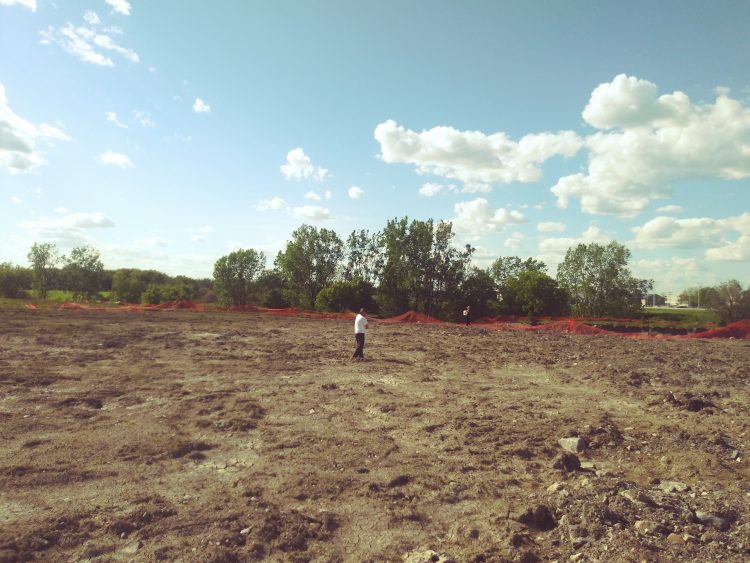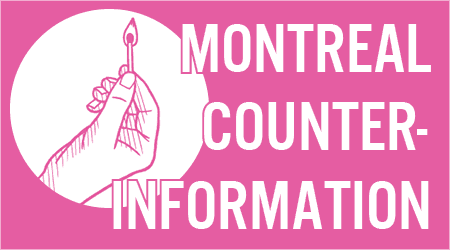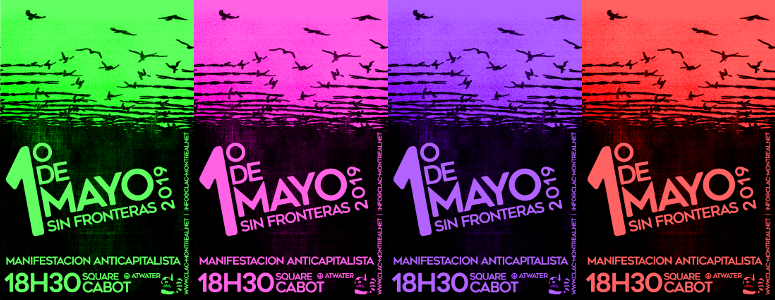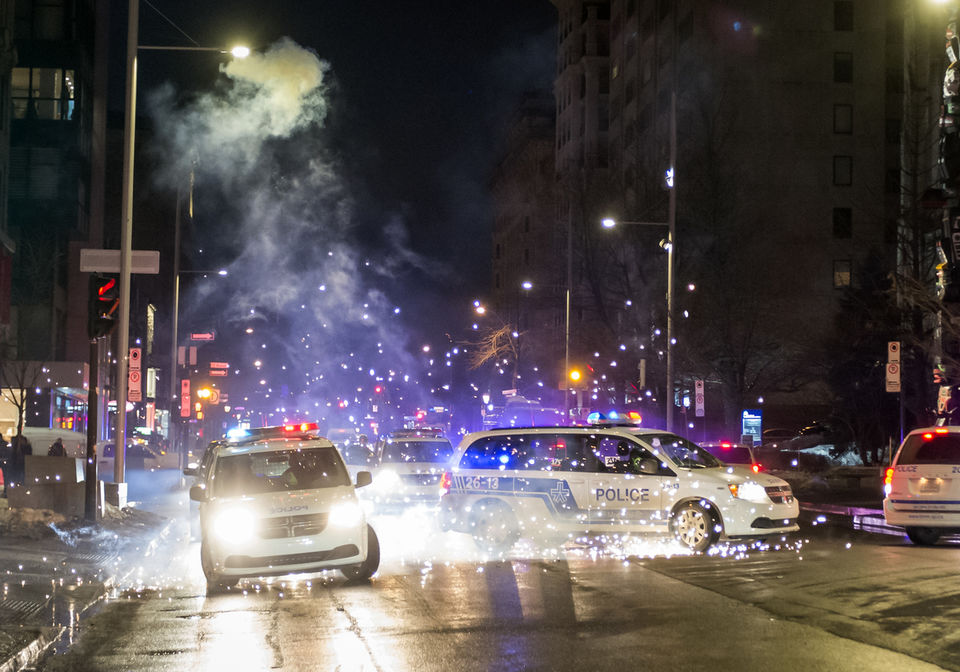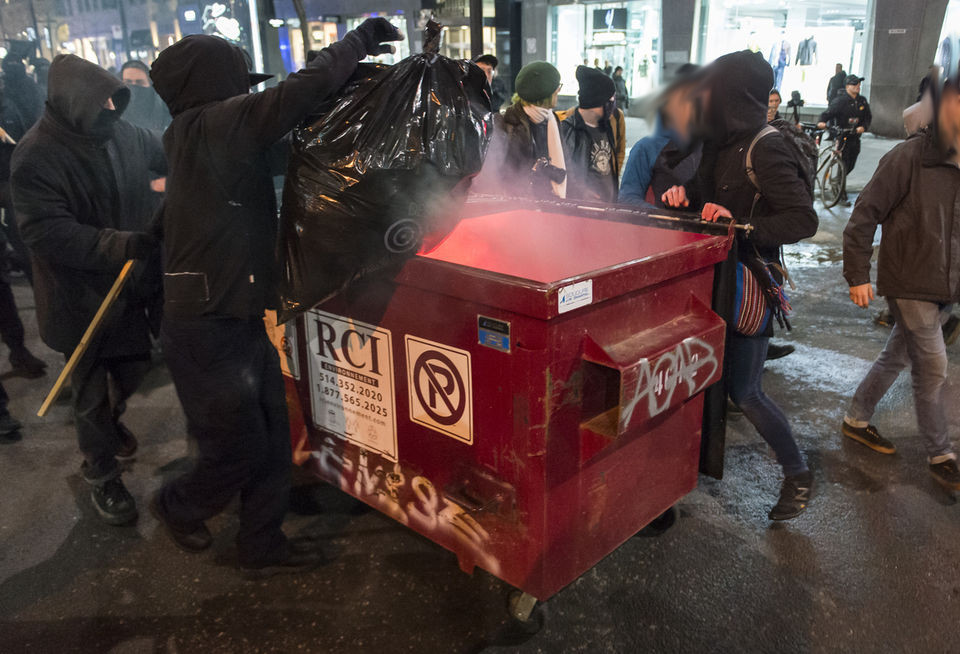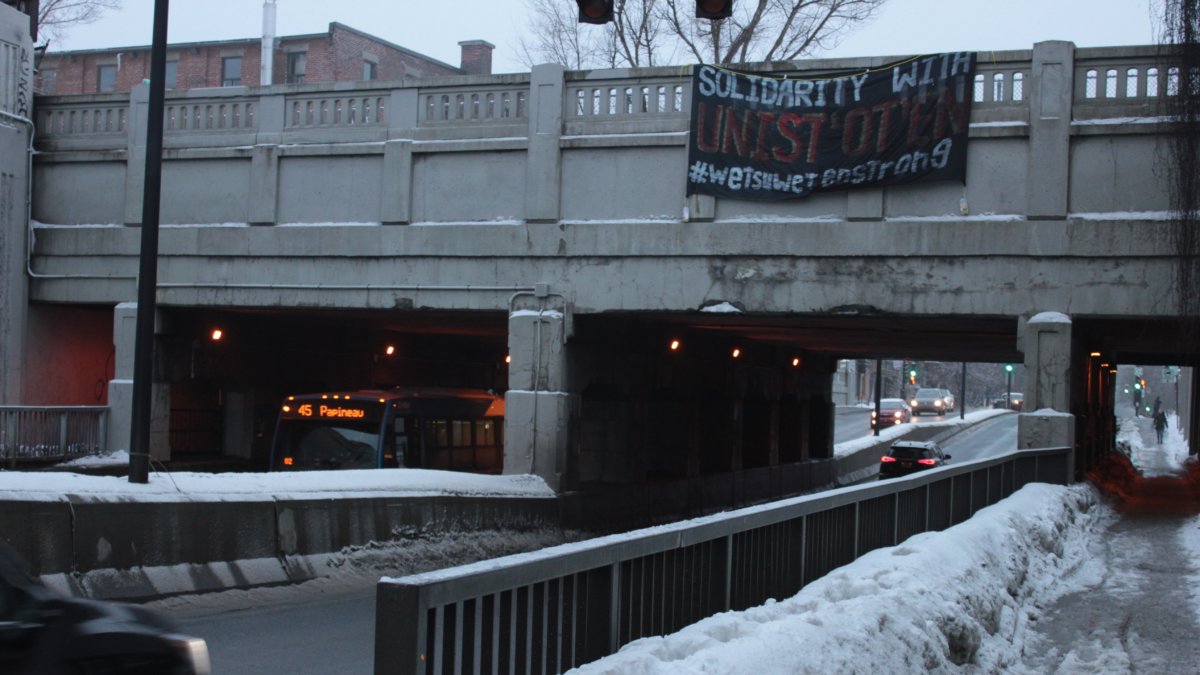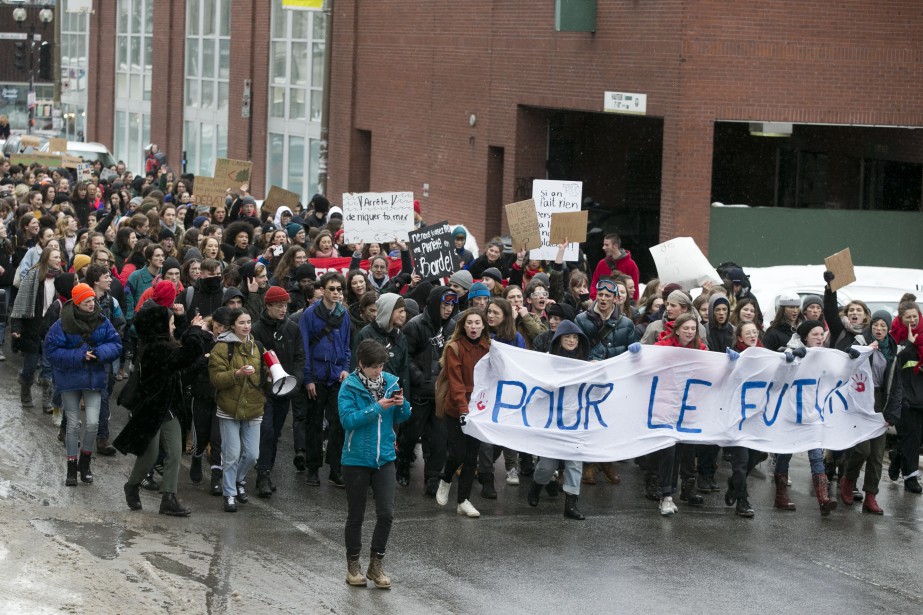
Anonymous submission to MTL Counter-info
Our lives are increasingly characterized by algorithms that mediate our relationships to each other and to the world around us. By analyzing our behaviors, our preferences, our networks, and many other aspects of our lives, those who exert power over us manage to stay one step ahead. What’s at stake here is our capacity to have secrets, to resist, to agitate, to attack what destroys everything we love and protects everything we hate. It’s a fight against the new panopticon.
Montreal has become a hub for Artificial Intelligence (AI) development. Hundreds of millions of dollars have been allocated to several companies that now offer tons of specialized yuppie jobs in the domain. At the end of 2018, a document of principles surrounding AI development in Montreal was drafted. These principles were written up by some of the biggest players in AI in an effort to address public concerns about the potential of these new technologies. The document, now known as the Montreal Declaration, lists 10 unattainable and ridiculous principles such as: “The development and use of artificial intelligence systems must permit the growth and well-being of all sentient beings”. Such pitiful public relation stunts by the engineers of social control are no longer surprising. AI will soon be integrated into nearly all spheres of society, from finance and the extractive economy to healthcare and policing. From now on, in a multitude of domains, any entity that wishes to be competitive will need to integrate AI into its operations. States will apply these technologies to expand their capacity for social control, surveillance, and military intervention. We think that it can be useful to shed some light on different projects in the city to demonstrate the intentions of some key players. In order to start a conversation and develop ideas for intervention, we decided to map out Montreal’s AI industry and its allies.
The AI milieu in Montreal is extremely interconnected. Dozens of companies work together to simultaneously develop AI systems for a variety of economic, social, and political goals. The Montreal Institute of Learning Algorithms (MILA), operating out of the University of Montreal (UDM), is one of the leading institutions in terms of research and coordination of projects. According to Valerie Pisano, the president of MILA, “today, there is a buzz around Montreal and artificial intelligence, we are one of the world leaders in terms of creation, production, and inspiration of talents”. MILA’s mission, according to their website, is to federate researchers in the area of Deep Learning and Machine Learning (see FAQ for definitions). They want to share their infrastructure, knowledge and skills with a pool of companies that could benefit from opportunities opened up by their research.
“The machine learning laboratory at the University of Montreal is led by seven professors, Prof. Yoshua Bengio, Prof. Aaron Courville, Prof. Pascal Vincent, Prof. Roland Memisevic, Prof. Christopher Pal, Prof. Laurent Charlin, and Prof. Simon Lacoste-Julien, all of whom are leading world experts in machine learning, especially in the rapidly growing field of deep learning.” MILA also has offices in the O Mile Ex building located in the Parc Extension neighborhood, at 6666 Saint-Urbain Street. O Mile Ex is a part of MILA’s effort to provide a platform for collaboration, share infrastructure, and provide access to their research to a pool of companies. The space hosts numerous companies specialized in research and development for deep-learning, defense, security, and transportation work. Institutions such as Thales, QuantumBlack, the Institute For Data Valorization, and Element AI all have offices at O Mile Ex. Designed by the Lemay architecture firm (known for designing police headquarters, a migrant prison, etc), this tech hub is a hostile force for the residents of Parc-Ex. Not only are these projects likely to negatively affect the lives of the people living there, but they also contribute to gentrifying this largely immigrant neighborhood to accommodate the developers and students working there.
Yoshua Benjio, professor and director at MILA, is one of the pioneers of AI research worldwide, and his expertise has been sought after by various institutions throughout the years. Although Benjio and his team claim to be firmly opposed to the weaponization of AI systems, MILA seems to be working closely with Thales. Thales Canada develops and provides information systems for defense and security, aerospace, and transportation markets in Canada and internationally. It offers command, control, communications and computer-based intelligence, surveillance and reconnaissance products, force protection products, and radar and night vision systems. Thales has opened its own private lab at the O Mile Ex building.
MILA has also accepted 4.5 million dollars over three years from Google, which brings us to our next players in Montreal’s AI industry: Hugo Larochelle, Shibl Mourad, and Aaron Brindle. Hugo is Google’s AI research director in Montreal and works at the Google Brain Lab, Shibl is the tech engineering director at Google’s Montreal offices, and Aaron is responsible for communications at Google Canada. Google is planning to double its capacity to operate in Montreal by 2020, when they will move from their current offices at 1253 McGill College to a space twice the size at 425 Viger Street West.
Google has been providing AI technology for drone strike targeting to the Defense Department of the United States. Google tried to obscure this relationship by routing this collaboration through a northern Virginia tech company called ECS Federal. They use deep learning tools to help drone analysts interpret the vast array of image data from the military’s fleet of drones in countries like Syria and Iraq.
Whether it’s the US Deputy Defense Secretary Robert Work talking about working with ECS/Google on algorithmic warfare designed to “accelerate [the Department of Defense’s (DoD)] integration of big data and machine learning” and “turn the enormous volume of data available to DoD into actionable intelligence and insights at speed,” or Google devices normalizing the use of forensics like voiceprint, GPS location, search histories and preferences, and so much more, these kinds of developments and future Google projects should be recognized as what they are: tools of social control meant to reconfigure the way that capital flows and the world is governed. It is unclear which projects are being developed in Montreal specifically, but technological advances made in one field can easily be re-purposed and adapted to many other fields.
This arsenal of domination is being pushed forward by companies and people working here in Montreal. Such developments are being used internationally to police communities, silence dissent, and limit people’s capacity to attack the existing order.
Google, a subsidiary of Alphabet, is so ubiquitous that it has become part of our language as a verb. But behind its cool, friendly, 21st-century tech image lies a business model based on surveillance capitalism. Examples include:
“Since the beginning of 2017, Android phones have been collecting the addresses of nearby cellular towers—even when location services are disabled—and sending that data back to Google. The result is that Google, the unit of Alphabet behind Android, has access to data about individuals’ locations and their movements that go far beyond [user’s] expectation of privacy.”
“In Toronto Google is part of the ‘smart city’ project. Its sister- company ‘Side Walk Labs’ is specialized on the matter. This cool name stands for a city where equipment can detect, analyze and collect data in real time, being present at every street corner, installed in the ground and attached to the walls . Everyone will be monitored, for the sake of ‘efficiency’ or saving costs.”
“Machines are increasingly making decisions that influence every aspect of our life. People are being turned into mere series of numbers: Who gets access to credit, how much does insurance cost, who has the right to board a plane, who gets killed by a drone. This is only possible through the harvesting of data by companies like Google.”
(from FuckoffGoogle.de, website from the fight against Google in Germany)
All of the usual suspects are also very active in Montreal. For instance, Facebook’s artificial intelligence research program or FAIR directed by Joelle Pineau is actively working on Internet of Things (IoT) projects, and Microsoft owned lab Maluuba specializes in deep learning and is trying to double its size by 2020 to have 80 engineers. Microsoft President Brad Smith “is excited to engage with faculties, students and the broader tech community in Montreal, which is becoming a global hub for AI research and innovation.” Several lesser-known but similarly fucking huge companies are also working in Montreal. CGI is a company headquartered in Montreal with hundreds of offices worldwide. Founded in 1976 by Serge Godin and André Imbeau as an IT consulting firm, they soon began branching out into new markets and acquiring other companies. They have customers in a wide array of industries, with many in financial services, public safety (police forces), and defense. CGI also develops products and services for markets such as telecommunications, health, manufacturing, oil and gas, posts and logistics, retail and consumer services, transportation, and utilities. On their website, CGI says it works on developing deep learning, the Internet of Things, augmented reality, smart cities, and automated data analysis tools.
Another firm, Deloitte, has offices in Montreal, and has clients from San Diego to Buenos Aires to India. They are inspired by disturbing case studies in predictive policing and crowd-sourced repression. Here are a few examples from their website:
“The 2011 riots in London were an incredibly chaotic time. There were more than 20,000 emergency calls to police, a 400 percent increase from a normal day; and almost 2,200 calls to the London Fire Brigade, which is 15 times the normal amount. To help catch those involved, the London Metropolitan Police crowd sourced the identities of 2,880 suspects using a smart-phone application. The police asked citizens to download the Face Watch ID app and help identify the persons through images taken from CCTV footage. If an image was known to them, citizens entered the name or address of the person, which was sent to the police immediately and confidentially. This enabled the police to effectively apprehend suspects and led to charges being filed against 1,000 perpetrators.”
“In a city of over four million, and with a crime rate that rose in all categories in 2015, the Los Angeles Police Department knew that it needed to take action. To help tackle crime, Los Angeles piloted a new tool incorporating some of the top Smart Security thinking: PredPol. The mission of PredPol is simple: place officers at the right time and location to give them the best chance of preventing crime. The tool, which has been piloted in the Los Angeles and Santa Cruz police departments, uses three data points – past type, place, and time of crime – to predict criminal behavior. These data points are fed into a unique algorithm, which incorporates criminal behavior patterns. Law enforcement then receive customized crime predictions, automatically generated for each shift in their jurisdiction. These predictions are highly specific and lay out the places, mapped to 500 by 500 feet squares, and times where crimes are most likely to occur. While still only a pilot, PredPol has already brought down property crimes by 13 percent in one of the divisions.”
“Risk Assessment and Sentencing Tool or RAST is a sophisticated data analytics engine that helps classify offenders as low-, medium-, and high-risk and makes targeted sentencing recommendations based on a host of case-specific factors. The RAST canvasses large data repositories across multiple states and jurisdictions, accounting for both static and dynamic factors. Static factors are unchangeable circumstances related to crimes and offenders, such as offense type, current age, criminal history, and age at first arrest. Dynamic factors, sometimes called criminogenic factors, can be mediated by interventions and include attitude, associates, substance use, and antisocial personality patterns. The RAST is more advanced and more useful to judges, juries, and parole boards in three specific ways. First, since the Department of Justice’s National Institute of Justice administers it at the federal level, it relies on an exceptionally large, nationwide data set. Second, the data is continually reassessed for its predictive validity: It is reviewed annually to determine how often RAST correctly classifies offenders, accounts for static and dynamic factors, and makes effective sentencing decisions as measured by the rate of recidivism. Finally, RAST differs from traditional risk assessment tools because it takes into account more than answers to questionnaires. Static and dynamic factors are used in combination with specific, real-time data such as an offender’s behavior and location.”
The Canadian Bar Association is also talking about implementing AI in the justice system here. Karim Benyekhlef, the expert on the matter, is responsible for the cyberjustice lab at UDM.
Fujitsu has also been making waves in the city. Montreal is planning to sign a 2-million-dollar contract with the Japanese company to make the city “smarter”. Fujitsu is supposed to develop systems that will help direct traffic in order to improve emergency response time. The company would link all of the city’s traffic cameras into a single network to analyze the flow of traffic in order to increase efficiency and monitor traffic.
So why are all of these institutions choosing Montreal? Partly because of ongoing research and a skilled workforce that was established over a decade ago, but also because of incentives created by the state. In September 2016, the Canada First Research Excellence Fund allocated $84 million to McGill University for their Healthy Brains for Healthy Lives (HBHL) initiative and $93.5 million to Université de Montréal for Optimization of Deep Learning and Knowledge Sharing (IVADO). In March 2017, $40 million was allocated to Montreal from the Government of Canada’s $125M Pan-Canadian AI Strategy, administered by the Canadian Institute for Advanced Research (CIFAR). In spring 2017, $100 million was allocated by the Quebec government for the creation of a province-wide cluster and institute for Artificial Intelligence. In March 2018, the Quebec government announced a grant of $5 million toward the establishment of an international organization on artificial intelligence and $10 million to NEXT.AI and CDL, initiatives of HEC Montreal, over the next five years. SCALE.AI, now partnered with NEXT.AI, is part of a new consortium that will form an international platform of logistical chains that integrate AI. In December 2018, the government of Canada gave 280 million dollars to this new giant managed by Hélène Desmarais, wife of Paul Desmarais – President of Power Corp. She is also executive president at IVADO.
Moving Forward
This research on the network of AI players in Montreal is by no means complete. The list keeps getting longer and the scope of the industry is not about to stop expanding. Others can take this as a starting point and dig deeper.
Although the scope of these projects seems to be all-encompassing, odds are that a lot of the development and applications of these technologies are still in their infancy and quite vulnerable. However, the possibility that these projects will reach their completion in the near future is very likely. We like to think that through our actions, we can inspire others to attack these developments on which systems of domination and social control will increasingly depend. Through conversations and research, we can find the weaknesses of these architects of complacency, and strike.
– some individuals against authority
April 2019, Montreal // Tio’ti:ake
FAQ
What is Machine Learning?
Machine learning (ML) is a subset of artificial intelligence in the field of computer science that often uses statistical techniques to give computers the ability to “learn” with data, without being explicitly programmed. While ML is often described as a sub-discipline of AI, it’s better to think of it as the current state-of-the-art – it’s the field of AI which today is showing the most promise at providing tools that industry and society can use.
What is Deep Learning?
Deep learning is a particular subset of machine learning. While this branch of programming can become very complex, it started with a very simple question: “If we want a computer system to act intelligently, why don’t we model it after the human brain?” That one thought spawned many efforts in past decades to create algorithms that mimicked the way the human brain worked—and that could solve problems the way that humans did. Those efforts have yielded increasingly competent analysis tools that are used in many different fields.
What is the Internet of Things?
The Internet of Things (IoT) comes down to the concept of connecting any device with an on/off switch to the Internet (and/ or to each other). This includes everything from cellphones, coffee makers, washing machines, headphones, lamps, wearable devices and almost anything else you can think of. This also applies to components of machines, for example a jet engine of an airplane or the drill of an oil rig. The point is that data moves in a web of interconnected items to make everything ‘smart’.
Example:
You come home at night. Your smart home recognizes you, and automatically adjusts lighting, temperature, ambient sound. Your domestic items chatter among themselves. “What’s up?”, your computer asks your mobile phone, camera, and all your smart mobile devices, which provide it with daily data. Your smart fridge notes that you eat the last yogurt, and orders more immediately on the Internet.[…] A glance to one of your screens reassures you of your old mother who lives alone: the sensors securing her smart home do not report anything unusual about her blood pressure and medication consumption. She does not need help. In short, without you, your life unfolds just as it should. It’s such a convenience.
(IBM & the Society of Constraint)
